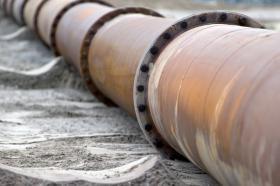Page 10
EPIB Trail
Volume 7, Issue 4
Swaying Gas Prices and the Cost to the Environment By Christi Capazzo Recently, gas prices have been fluctuating, but the prices indicate bigger movements than just the change in people’s pockets or the numbers in their bank accounts. Gas prices have steadily dropped from June of 2014 until January of 2015. In the eyes of the public, this is a good move for the economy since it allows vehicle owners to worry less about the money they spend on gas and allow them to put more money into the economy. However, prices have risen again since the end of January and connect to larger and more trends such as: drastic changes in oil production and the purchase of fuel-efficient cars. One of the first issues that gas prices indicated was the price of oil per barrel, which is typically based off of market costs and the volume of oil being produced. Due to the introduction of hydraulic fracturing and the manipulation of U.S. shale oil resources, the U.S. has become a competitor in the global oil market; doing so led to a drop in domestic oil prices. While the public cheers for cheaper gas, the drop in prices hurts the production of shale oil. With such a volatile market, entire drill sites have shut down in Texas. The Federal Reserve of Dallas cites that Texas alone added two million barrels of oil a day to the market over the past four years. Despite this major contribution, some of these sites have shut down entirely, leaving their workers unemployed. The extraction process is expensive for shale manufacturing and it is economically feasible only if the barrel of oil stays at about $70 a barrel. An alarming trend that has also been reported is the increase of sales in trucks and SUVs since gas prices have dropped in 2008. This is clearly due to the decline in oil prices as gas prices have effectively remained cheap, but as mentioned earlier, the prices of the oil market are difficult to project. Global oil production only continues to increase by driving down the cost per barrel; as seen in the record production of 10.67 million barrels of oil a day from Russia. But what is the cost to the environment? As Bryan Walsh states in his portion of the article from Time, “cheap crude will just keep people addicted,” it is senseless to continue to use a fuel source that is known to be unstable in cost and harmful to the environment when there are cleaner alternatives. Although gas prices remain noticeably cheaper compared to a year ago, there is still a lack of attention being given to the fact that prices have experienced a slow yet steady increase over this past week. Michigan and Florida shed positive light on the fact that gas prices are nowhere near being as high as they have been in recent years; this naturally encouraged people to spend more on gas and travel. This craze for cheap gas prices will inevitably hurt the market for electric cars. Typically, when gas prices are low, the public shies away from buying hybrid of electric cars and shifts back to buying vehicles that do not move along our goals to reduce emissions. If people are easily swayed by the price in gas, this exemplifies a larger concern that must be considered over how seriously the people consider climate change. Collectively, choosing fuel efficient vehicles or hybrids and not allowing cheap gas prices to sway mindsets so easily may be key steps in assuring that emissions reductions hit their goal.
Altman, Alex, Emily Barone, et. all. “Barreling Down.” Time. Feb 2 2015: 3239. http://www.sun-sentinel.com/business/consumer/fl-gas-price-up-20150209story.html http://www.detroitnews.com/story/business/2015/02/09/gas-prices-expectedrisespring/23149495/ http://www.nationaljournal.com/energy/how-low-gas-pricescould-spike-obama-s-climate-plan-20150125
Back to Index

















